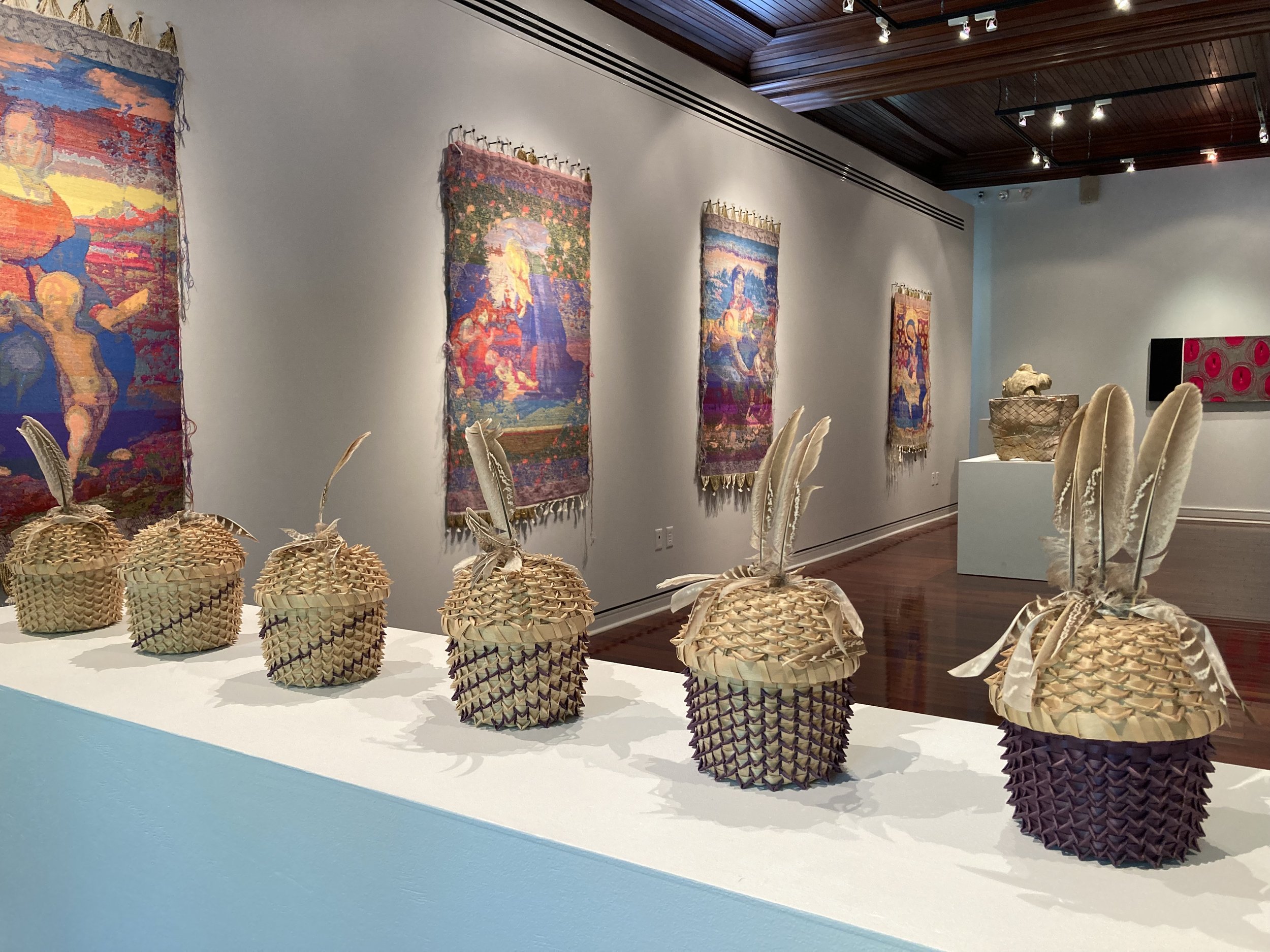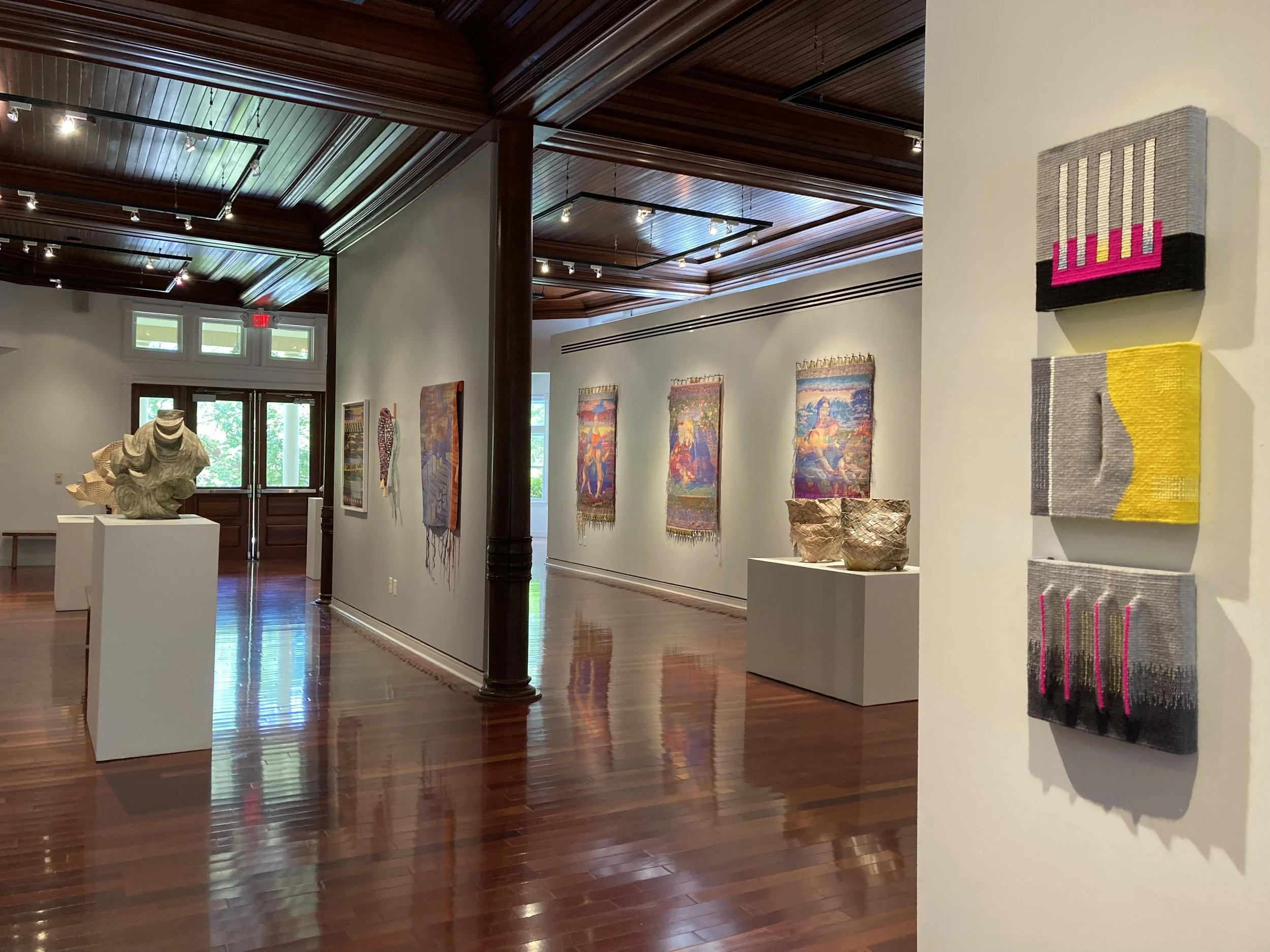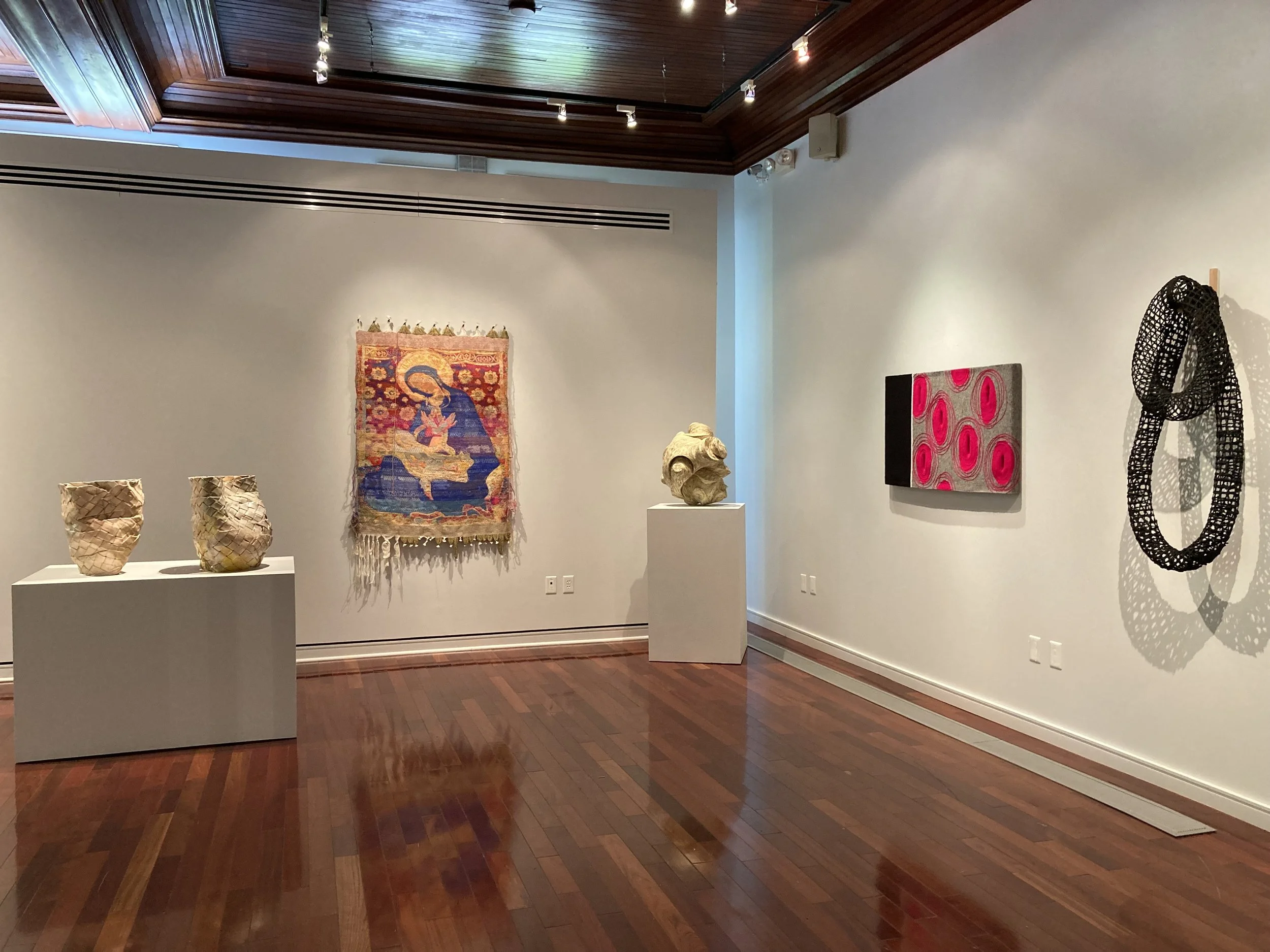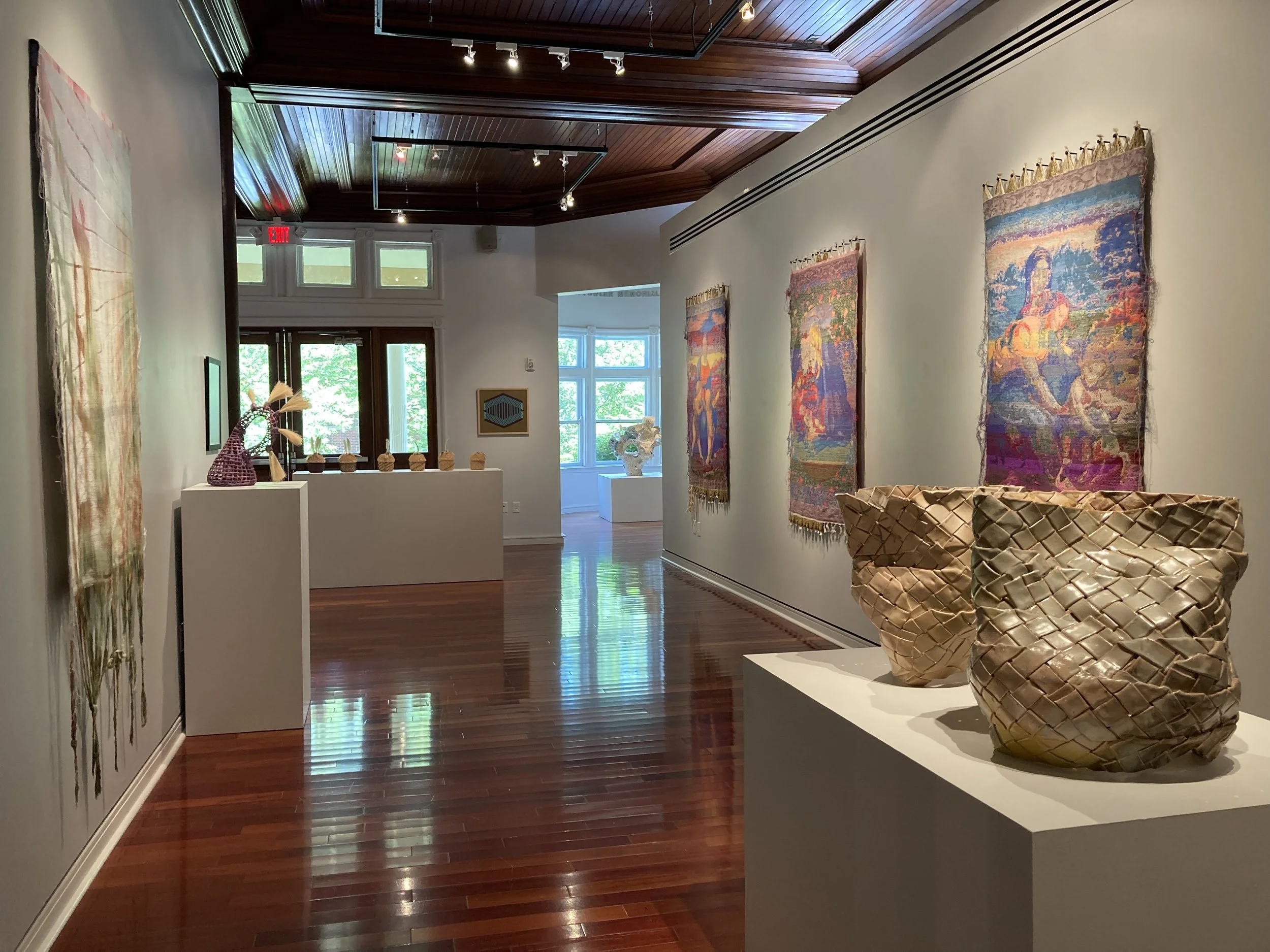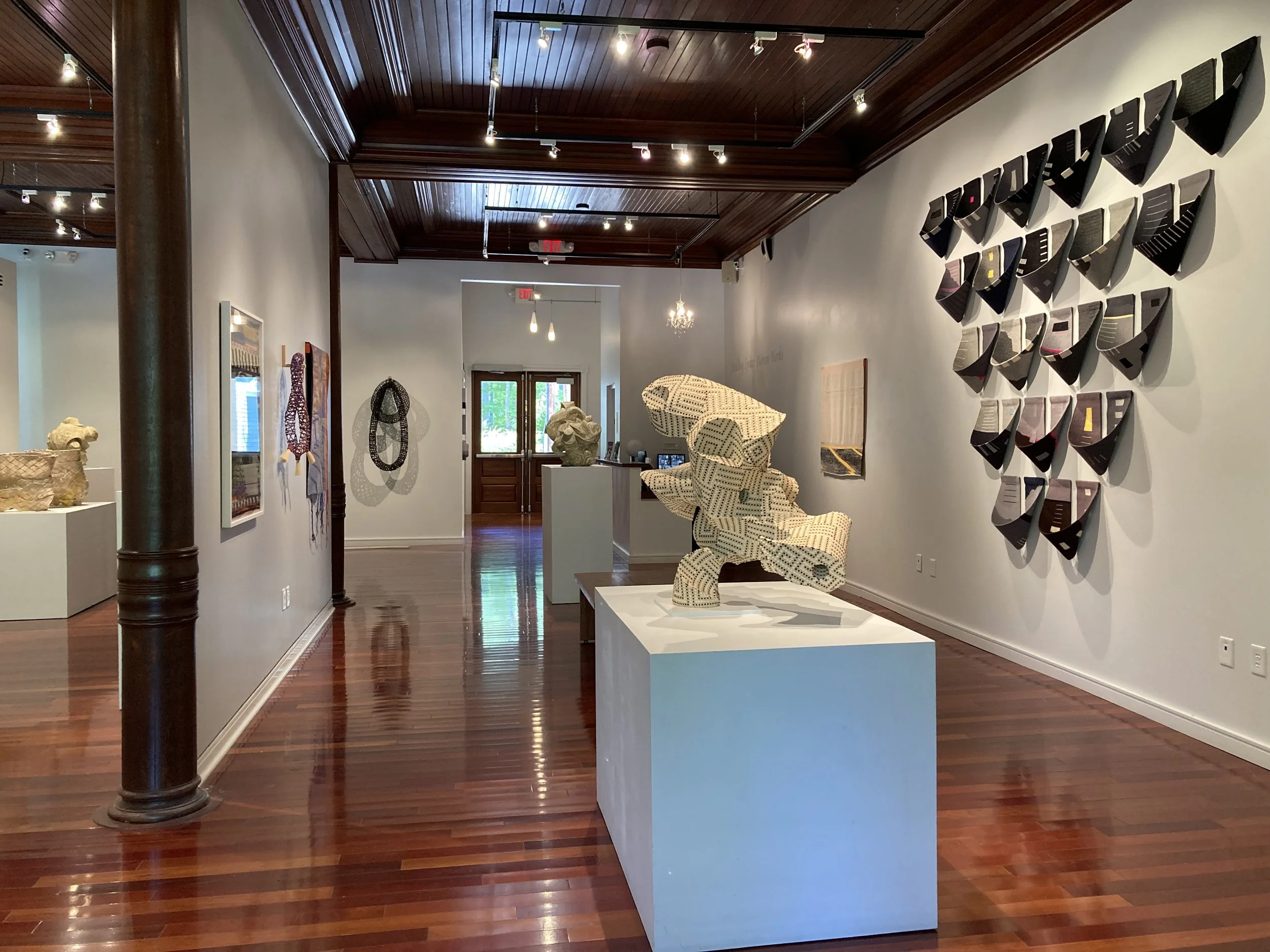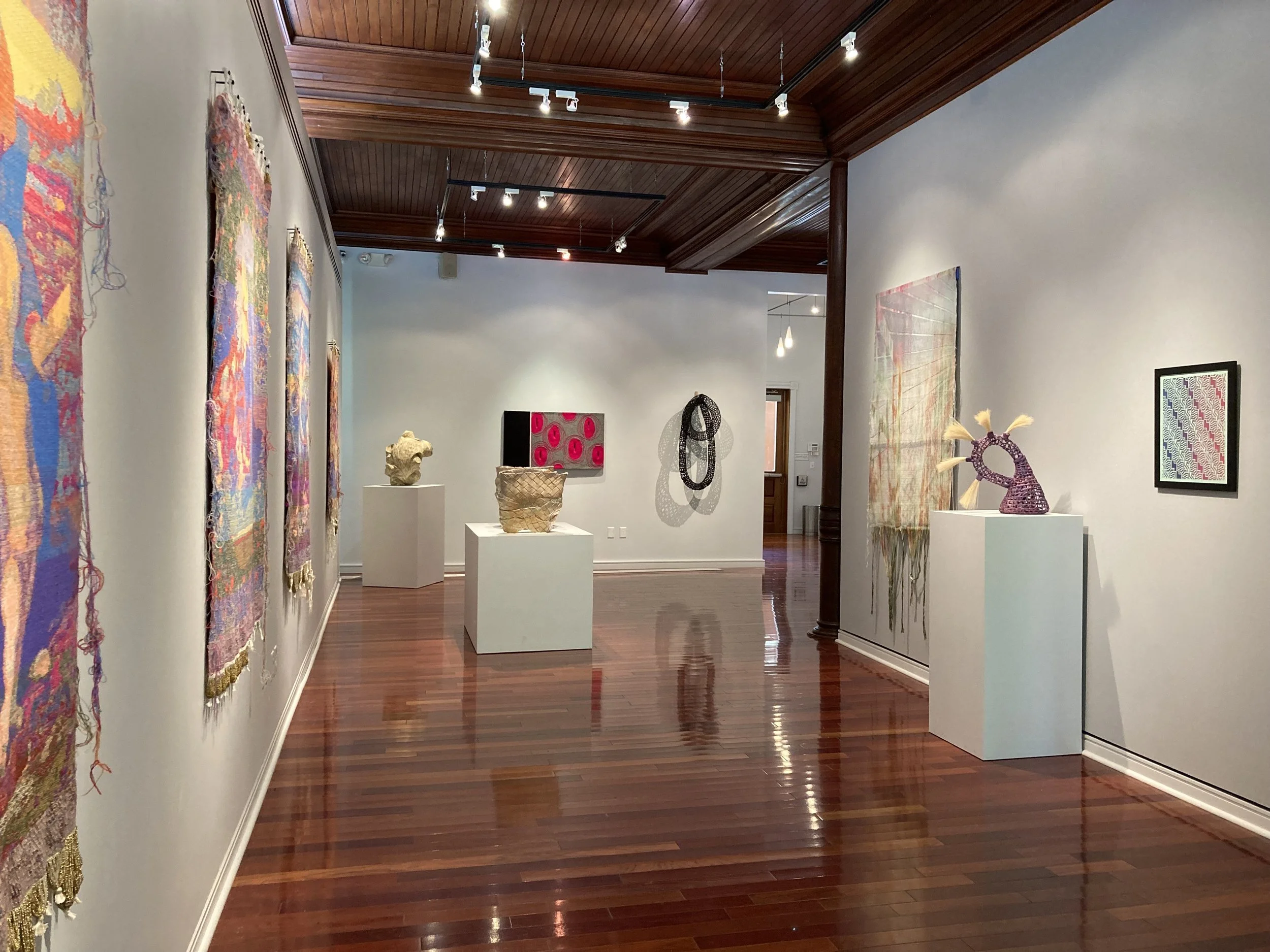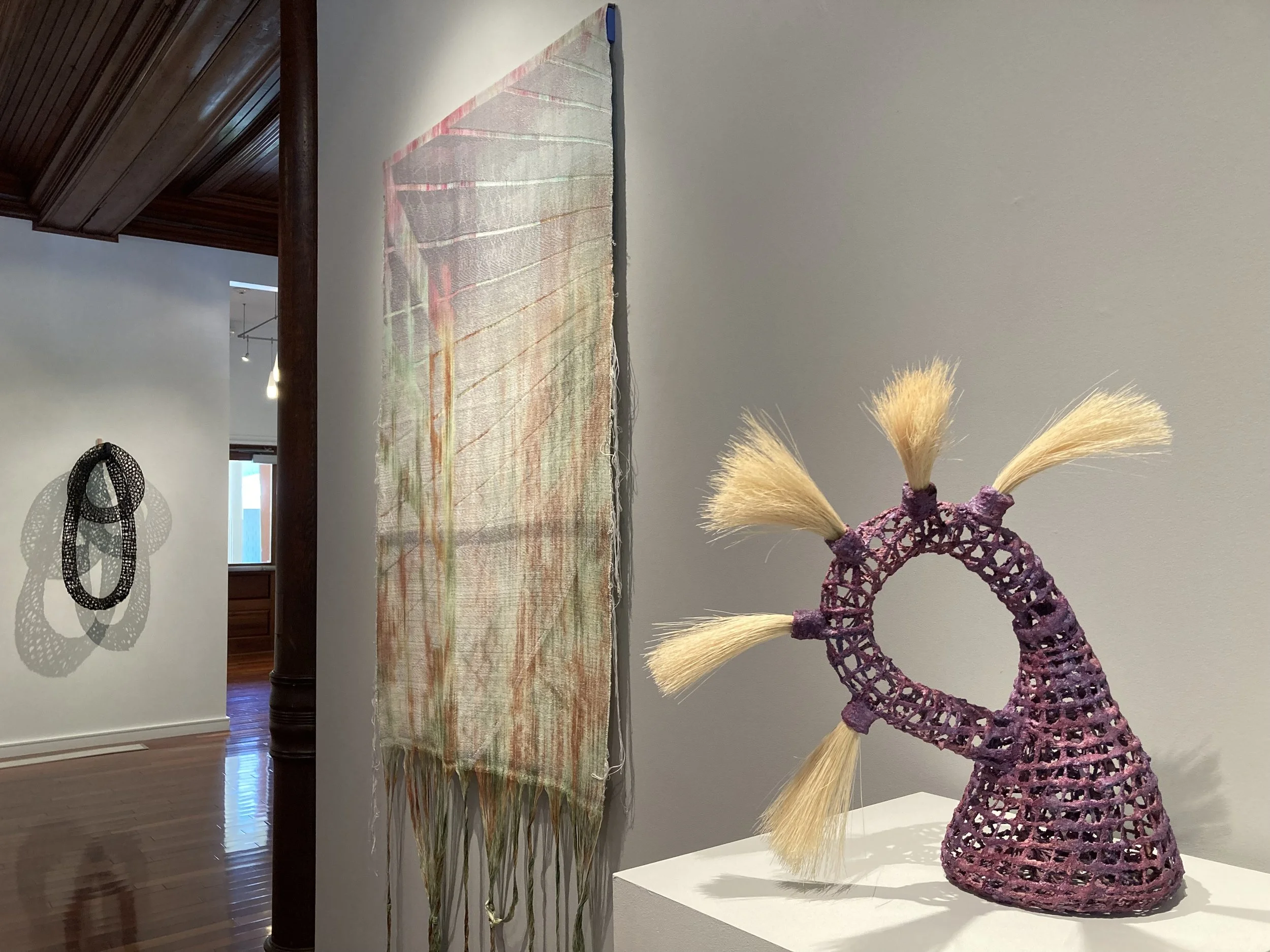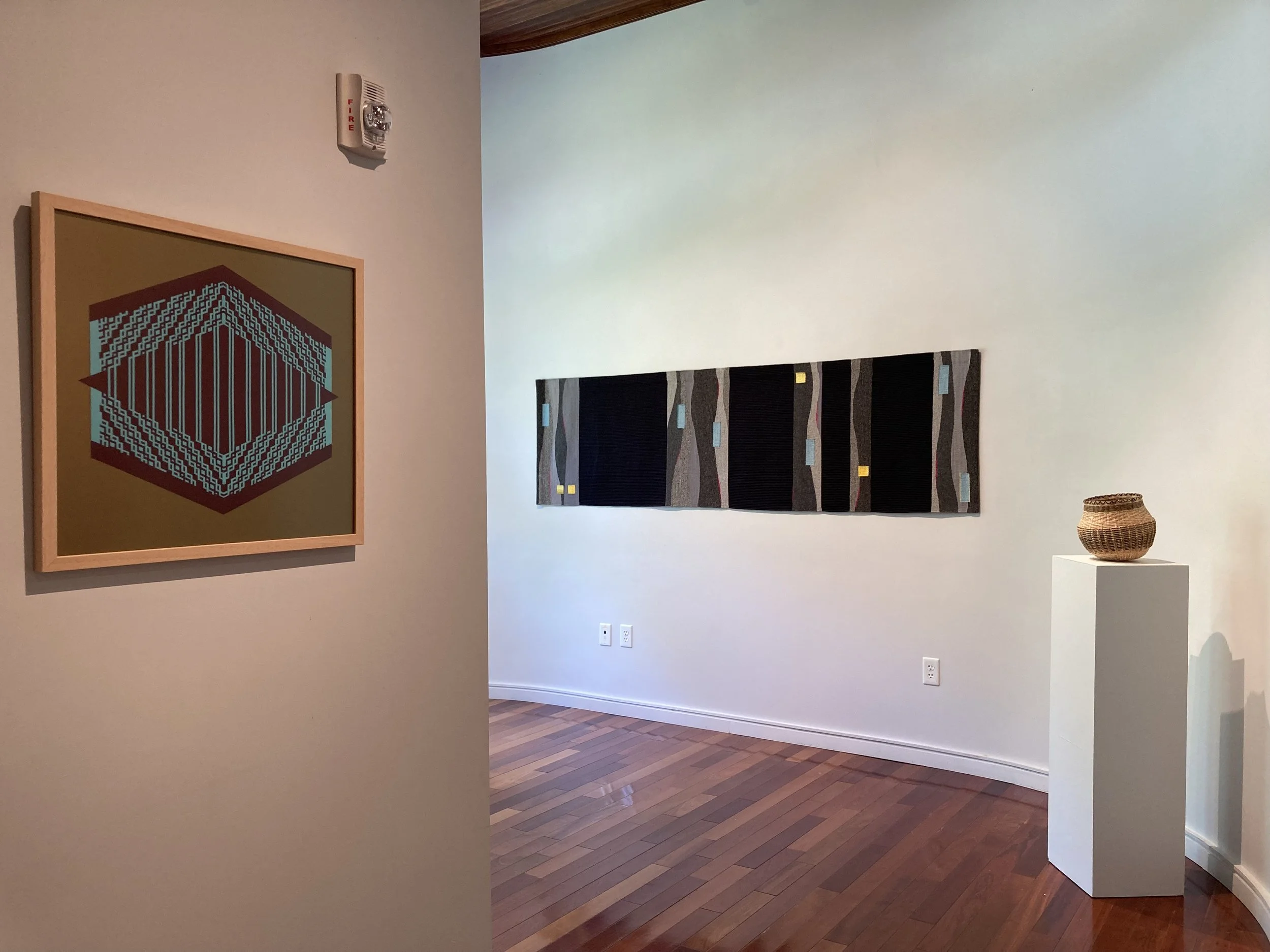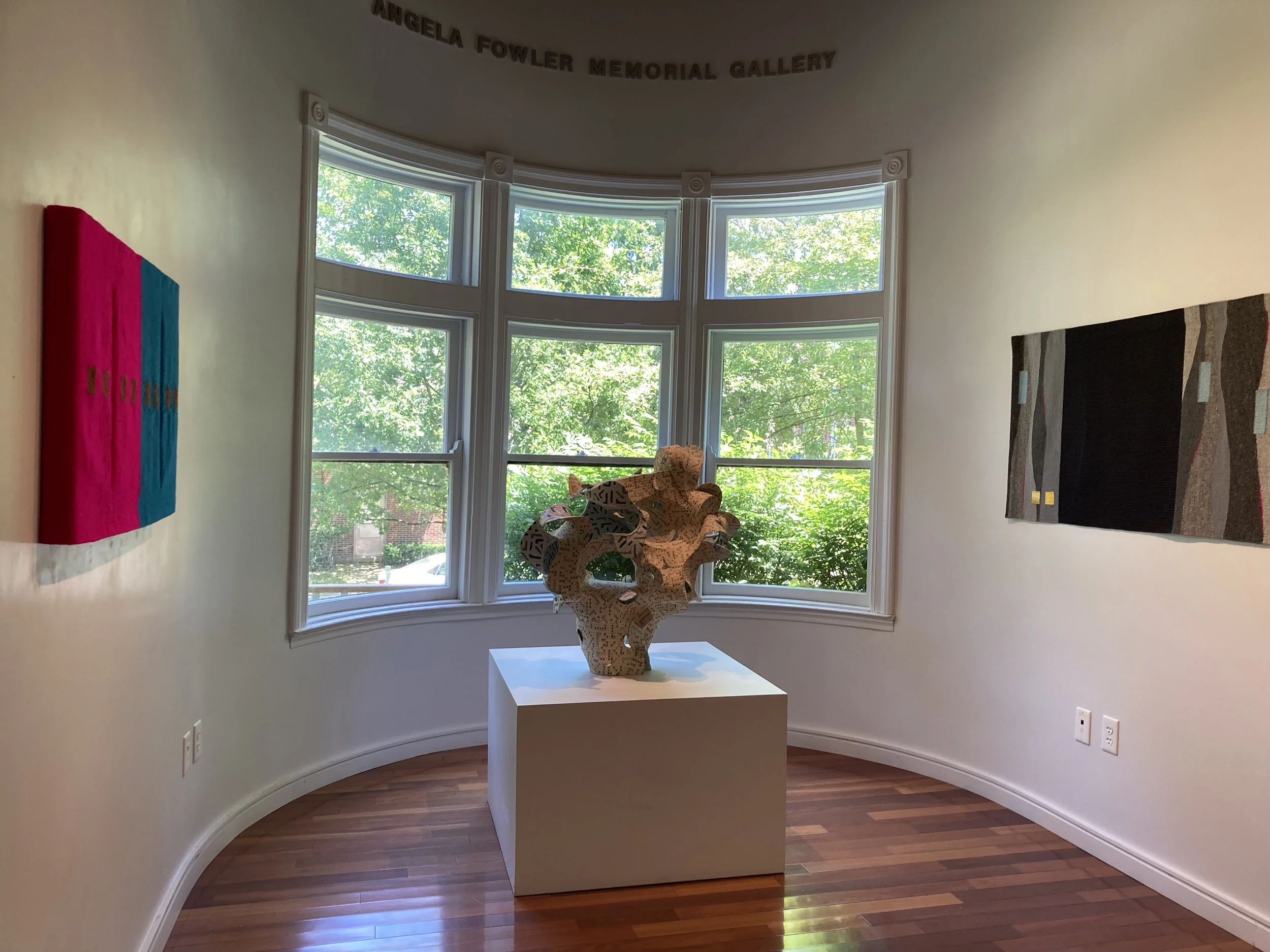Skye Tafoya
Holding Space: Woven Works
Fowler-Kellogg Art Center, Chautauqua Institution
June 23 - August 4, 2024
This exhibition is a nuanced exploration into woven structures including jacquard weaving, pulled warp tapestry, and basketry. While distinct in style and perspective, these works collectively address notions of containment, transformation, and connection to place through abstraction. They make space for and carry our stories.
ARTISTS: Austin Ballard, Carrie Hill, Susan Iverson, Anina Major, John Paul Morabito, Skye Tafoya, Hope Wang, and Sarita Westrup.
Take a Video Tour
Photos: Erika Diamond
Curatorial Statement:
Few objects provide us with more comfort and functionality than woven textiles. As one of the oldest crafted objects in human history, they have also been a method of cultural preservation, as the distinctive use of different materials and designs connects the maker to their home and community. With a focus on their story-telling capabilities, this exhibition is a nuanced exploration into the woven structures of tapestry and basketry, featuring artists who collectively address notions of containment, transformation, and connection to place through abstraction.
Inspired by the interaction between architecture and nature, Susan Iverson’s handwoven tapestries employ a rare “pulled-warp” weaving technique that creates peaks, valleys, and folds within the surface. Through shifting textures and colors, she captures the aura of light experienced during the transitory times of dusk and dawn. Hope Wang prefers the overlooked edges of urban landscapes, depicting asphalt, caution tape, or the shapes created by shadows of fences on porch steps. Also using digital weaving techniques to investigate what lies along the periphery, John Paul Morabito combines wool, cotton, and glass beads in their tapestries that consider the space for queerness within the canon and aesthetics of Roman Catholicism. They replicate Renaissance Madonna and child imagery from “old world masters”, using a more vibrant color palette to connect the visual language of their religious Italian youth with queer expression.
Perhaps the most structural of woven forms, baskets have historically been used to carry life-sustaining food. Their designs are also a symbol of cultural heritage and its preservation. In her ash splint basket set, Carrie Hill depicts the nations of the Haudenosaunee (Iroquois) Confederacy, featuring their signature purple color and feathers that correspond to each nation’s kastowa (headdress). Equally as meticulous, Skye Tafoya combines printing, cutting, and weaving of designs reminiscent of basketry patterns. She draws upon her Cherokee and Pueblo heritage as well as personal and familial narratives as inspiration for her 2-dimensional works.
Anina Major achieves a figural softness and scale in her woven ceramic vessels. These forms serve as a method for the artist to stay connected to her homeland, inspired by the geographic features of the Bahamas. By adding concrete and horsehair to her basket forms, Sarita Westrup conjures memories of crossing the border between US and Mexico - a blend of concrete, brush-like vegetation, and the woven structures of fences and less visible barriers. With their bottomless shapes and openwork weave, Major and Westrup’s sculptures function less literally as a basket but speak metaphorically of a connection to place and holding of memories. Austin Ballard uses cane webbing and polymer clay to create energetic forms that hold nothing tangible and seem to fold in on themselves. In contrast to the asymmetrical undulating forms, the careful placement of clay in these works draws attention to the orderly spaces between the cane webbing.
This exhibition acknowledges the history of weaving while celebrating its transformation over time and relevance within contemporary art and culture. These sculptural weavings range from functional hollow vessels to mixed media sculptures, but each artist reflects on the potential for transformation and evolution as they carry the stories of their own experiences and reconcile human interaction within the structures that surround them. They embody a harmony of opposites – near and far, light and dark, past and present. They make space for and carry our individual and collective stories.
Special thanks to Colin Shaffer, Rena Colletti, Lalia Riseng, and Silvia Ferrer for assistance in exhibition install.
